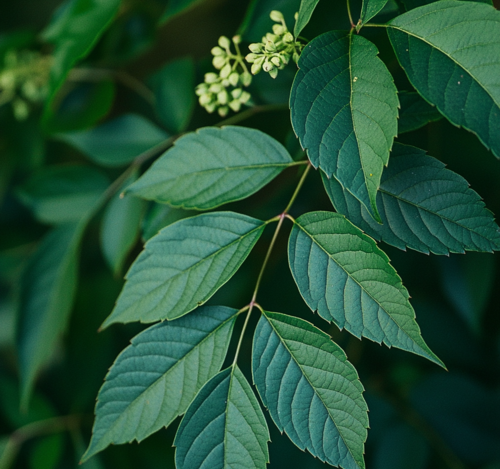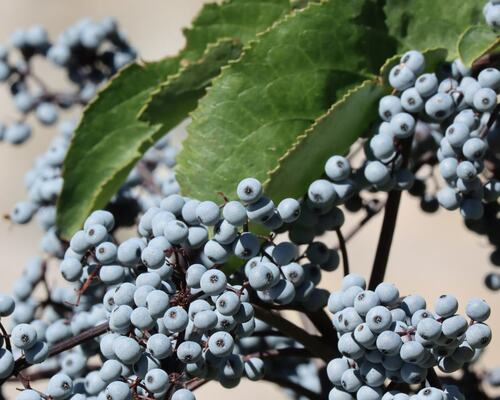San Francisco Landmark Tree: Sambucus Mexicana
Introduction
Sambucus mexicana , commonly known as the Mexican or blue elderberry, is a remarkable deciduous shrub or small tree native to the Western United States and Northern Mexico. In San Francisco, particularly within the Bernal Heights Natural Area, this species stands as a testament to the region’s rich botanical heritage .
Botanical Characteristics

The Intricate Beauty of Sambucus Mexicana Leaves and Buds
Typically reaching heights between 10 to 30 feet, S. mexicana is adorned with pinnate leaves comprising 5 to 9 oppositely arranged leaflets. In spring, it produces clusters of creamy white flowers that give way to glossy blue or black berries in the fall. A distinguishing feature of this species is the grayish-white powder that coats its berries, setting it apart from other elderberry varieties.
Ecological Significance
Beyond its aesthetic appeal, the blue elderberry plays a pivotal role in local ecosystems. Its flowers attract a variety of pollinators , including bees and butterflies, while the abundant berries serve as a vital food source for birds and other wildlife. Moreover, the plant provides habitat and nourishment for various animal species, contributing significantly to biodiversity.
Cultivation and Care
S. mexicana thrives in a range of environments but shows a preference for partial shade to full sun and moist, well-drained soils. Once established, it exhibits considerable drought tolerance. For optimal growth:
- Sunlight: Full sun to partial shade.
- Soil: Moist, well-drained soils; adaptable to various soil types.
- Watering: Low to moderate; can withstand dry conditions once established.
- Pruning: Regular pruning helps maintain its shape and encourages healthy growth.
Propagation is commonly achieved through hardwood cuttings taken during the tree’s dormant period in the fall. These cuttings can be planted directly outdoors to establish new plants.
Traditional Uses and Medicinal Properties

Vibrant Blue Elderberries: A Key Food Source for Wildlife in California
Historically, various parts of the elderberry plant have been utilized for their medicinal properties. The flowers, rich in vitamin C and flavonoids, have been used to make teas aimed at reducing inflammation and alleviating allergy symptoms. The berries, abundant in vitamins A and C, as well as antioxidants, are often processed into syrups believed to mitigate cold and flu symptoms by inhibiting viral replication. It’s crucial to note that raw berries should not be consumed, as they contain compounds that can cause nausea; cooking eliminates these compounds, making the berries safe for consumption.
Cultural Significance
The blue elderberry holds a special place in various cultures. In California, indigenous peoples have long valued the plant for its edible berries and medicinal properties. The wood has been used to craft musical instruments, earning it the nickname “tree of music.”
Landscaping and Restoration Applications
In landscaping, S. mexicana serves as an excellent choice for gardeners seeking to attract wildlife. Its rapid growth and adaptability make it suitable for various settings, from residential gardens to larger restoration projects. The plant’s ability to thrive in diverse conditions and its ecological benefits underscore its value in promoting biodiversity and ecological health.
Incorporating the blue elderberry into your landscape not only enhances aesthetic appeal but also supports local ecosystems, making it a valuable addition to any garden or restoration endeavor.
Originally published on September 6, 2018.


